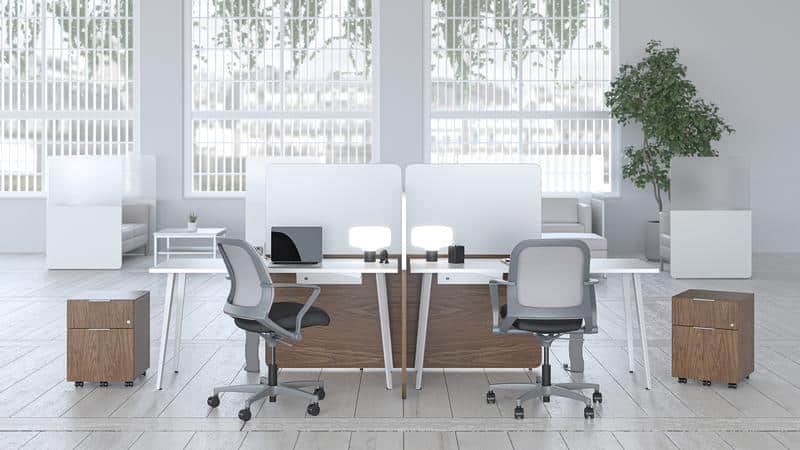Flexible work arrangements have become increasingly prevalent in today’s dynamic and ever-changing professional landscape. As companies embrace more adaptable work schedules, the design of office interiors plays a pivotal role in creating spaces that cater to diverse working styles. In this article, we’ll explore some innovative interior design solutions that align with the principles of flexible work arrangements.
- Open Concept Spaces: Embracing an open-concept layout fosters collaboration and communication among employees. Integrating communal workstations with flexible seating arrangements allows for easy reconfiguration based on the team’s needs. This design encourages a sense of community while providing the flexibility for individuals to choose their preferred working environment.
- Versatile Furniture: Opting for modular and multifunctional furniture is key to achieving adaptability in a flexible work setting. Furniture that can be easily rearranged or transformed serves the dual purpose of maximizing space efficiency and accommodating various work activities. Consider pieces such as movable desks, stackable chairs, and adjustable tables to cater to different tasks and preferences.
- Quiet Zones: Recognizing the importance of focused, individual work, interior design should incorporate designated quiet zones. These areas provide a retreat for employees who require concentration, ensuring that the open layout does not compromise productivity. Acoustic panels, soundproofing elements, and comfortable seating can contribute to creating serene spaces within the bustling office.
- Technology Integration: The seamless integration of technology is crucial for a successful flexible work environment. Incorporating smart office solutions, such as wireless charging stations, video conferencing facilities, and easily accessible power outlets, ensures that employees can work efficiently regardless of their chosen workspace. This technological infrastructure enhances connectivity and collaboration.
- Biophilic Design: Bringing elements of nature into the office through biophilic design has proven benefits for employee well-being and productivity. Incorporate natural light, indoor plants, and nature-inspired textures to create a calming and inspiring atmosphere. Biophilic design elements can be strategically placed in various zones, providing employees with the option to work in environments that resonate with their preferences.
- Personalized Workstations: Recognizing the diversity of individual preferences, providing employees with the ability to personalize their workstations fosters a sense of ownership and comfort. Adjustable desks, ergonomic chairs, and personal storage solutions contribute to creating workspaces tailored to the needs of each employee.
- Agile Meeting Spaces: Traditional meeting rooms may not align with the spontaneous and collaborative nature of flexible work arrangements. Designing agile meeting spaces equipped with movable furniture and interactive whiteboards encourages impromptu discussions and brainstorming sessions. These spaces can be adapted for various meeting formats, from quick stand-up huddles to more formal presentations.
Interior design solutions for flexible work arrangements should prioritize adaptability, functionality, and employee well-being. By creating a harmonious blend of open and private spaces, incorporating versatile furniture, and embracing elements of nature and technology, workplaces can be transformed into dynamic environments that cater to the diverse needs of today’s workforce.

